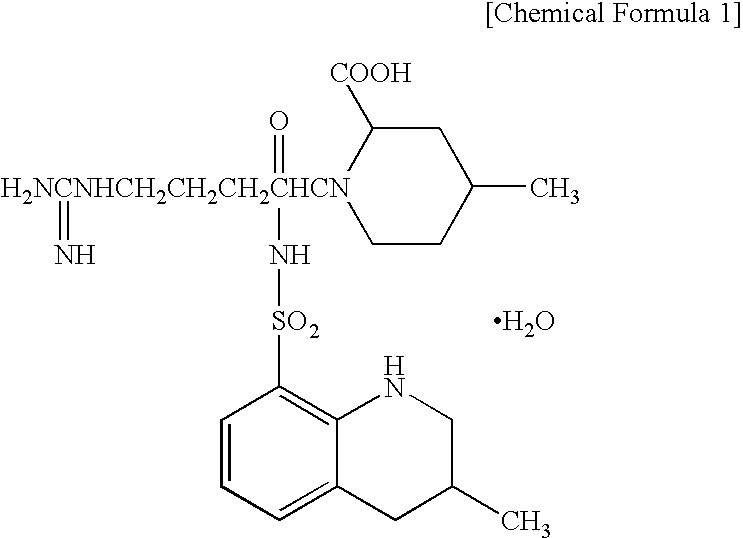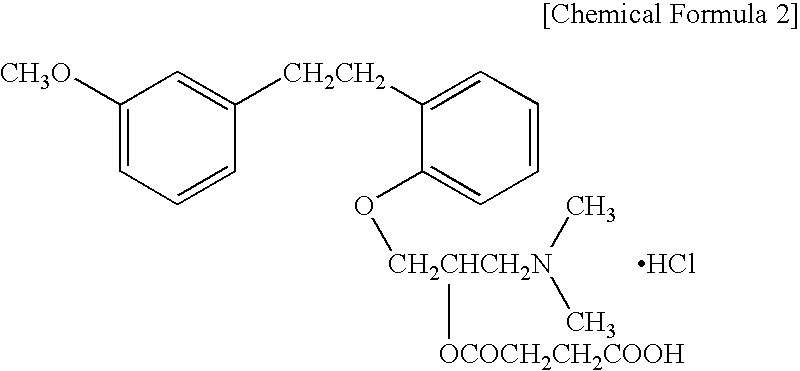Controlled Drug-Release Composition and Drug-Releasable Medical Device
a technology of release composition and drug release, which is applied in the direction of packaging foodstuffs, blood vessels, immunological disorders, etc., can solve the problems of difficult to form a porous structure on the surface of these medical tools, the release rate of anticoagulant drugs is significantly low, and the manufacturing cost is inevitable to increase, so as to promote the release of anticoagulant drugs, prevent restnosis and reocclusion of arteries, and promote the effect of anticoagulant drugs
- Summary
- Abstract
- Description
- Claims
- Application Information
AI Technical Summary
Benefits of technology
Problems solved by technology
Method used
Image
Examples
examples
[0124]The present invention is explained in further detail by the following examples, but these examples are not intended to restrict the present invention. The numerical conditions, treating methods and the like used in the examples, such as material, use amount, concentration, treating time, treating temperature and the like are only preferred examples within the scope of the present invention.
examples 17 to 19
[0132]As shown in table 5, a solution was prepared by dissolving 90 mg of poly(lactic acid), 30 mg of diethyl tartrate as a release auxiliary agent and argatroban of an antithrombin drug of the specified amounts shown in Table 5 in 1 mL of hexafluoroisopropanol. 600 μL of the resulting solution was cast on a SUS 316L Petri dish having a diameter of 18 mm and was air-dried to obtain a drug-carrying composition. The elution amount of the drug was pursued by immersing the composition in 50 mL of a phosphate buffer solution having a pH of 7.4 and sampling a portion of the buffer solution periodically and subsequently measuring the absorbance (Abs) at 330 nm which is a characteristic absorption band of argatroban. The absorbance after two weeks from the start of elution is shown in Table 5.
TABLE 5Polymer (90 mg)Amount(Mole Ratio ofReleasedLacticDiethylafterAcid / GlycolicTartrateArgatroban14 daysAcid)(mg)(mg)(Abs)Example 17100 / 030200.10Example 18100 / 030300.19Example 19100 / 030400.21
examples 20 and 21
[0133]A solution was prepared by dissolving 90 mg of poly(lactic acid), 30 mg of dimethyl tartrate or diethyl malate as a release auxiliary agent and 30 mg of argatroban of an antithrombin drug in 1 mL of hexafluoroisopropanol. 600 μL of the resulting solution was cast on a SUS 316L Petri dish having a diameter of 18 mm and was air-dried to obtain a drug-carrying composition. The elution amount of the drug was pursued by immersing the composition in 50 mL of a phosphate buffer solution having a pH of 7.4 and sampling a portion of the buffer solution periodically and subsequently measuring the absorbance (Abs) at 330 nm which is a characteristic absorption band of argatroban. The absorbance after two weeks from the start of elution is shown in Table 6.
TABLE 6Release AuxiliaryAmountAgentReleased (Abs)Example 20Dimethyl Tartrate0.35Example 21Diethyl Malate0.16
PUM
| Property | Measurement | Unit |
|---|---|---|
| pore size | aaaaa | aaaaa |
| pore diameter | aaaaa | aaaaa |
| pore diameter | aaaaa | aaaaa |
Abstract
Description
Claims
Application Information
 Login to View More
Login to View More - R&D
- Intellectual Property
- Life Sciences
- Materials
- Tech Scout
- Unparalleled Data Quality
- Higher Quality Content
- 60% Fewer Hallucinations
Browse by: Latest US Patents, China's latest patents, Technical Efficacy Thesaurus, Application Domain, Technology Topic, Popular Technical Reports.
© 2025 PatSnap. All rights reserved.Legal|Privacy policy|Modern Slavery Act Transparency Statement|Sitemap|About US| Contact US: help@patsnap.com


